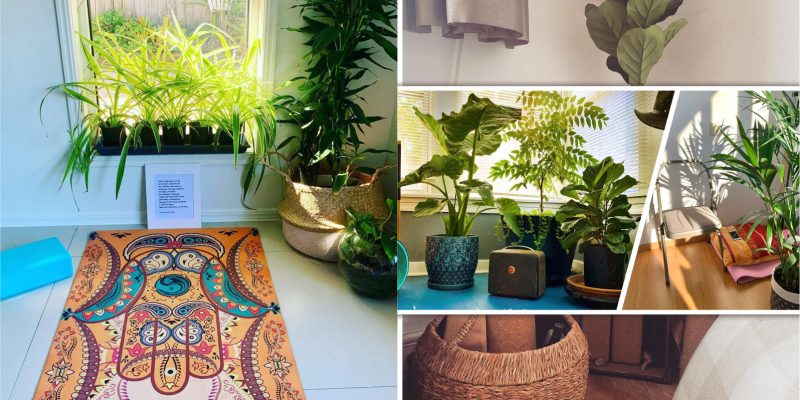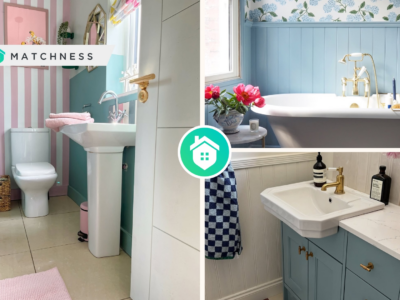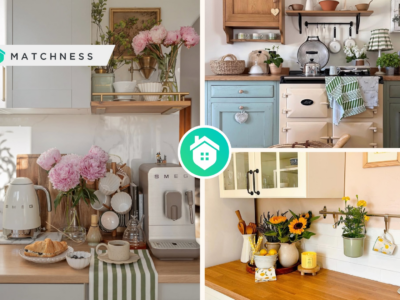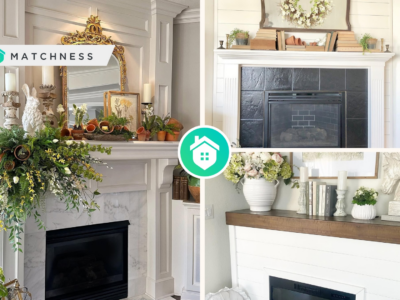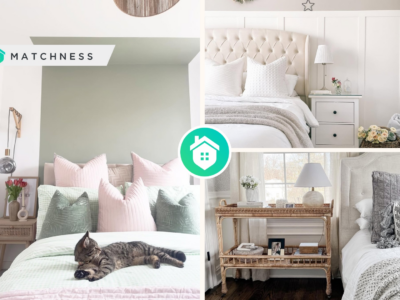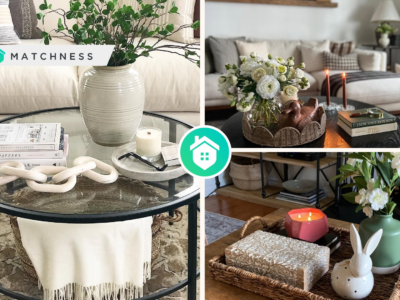One of the most effective ways to improve flexibility and promote inner peace is through yoga. However, not all of us have the time or money to go to a yoga studio every day. Fortunately, it is possible to create your own personal yoga space at home. Whether you are a beginner or an advanced yogi, you should create a comfortable and inspiring space for your yoga practice. Fortunately, you don’t need a large room to achieve this. Just look for a quiet, out-of-the-way corner in your living room that you can convert into your own yoga nook. But before creating a yoga corner in your living room, you need some considerations.
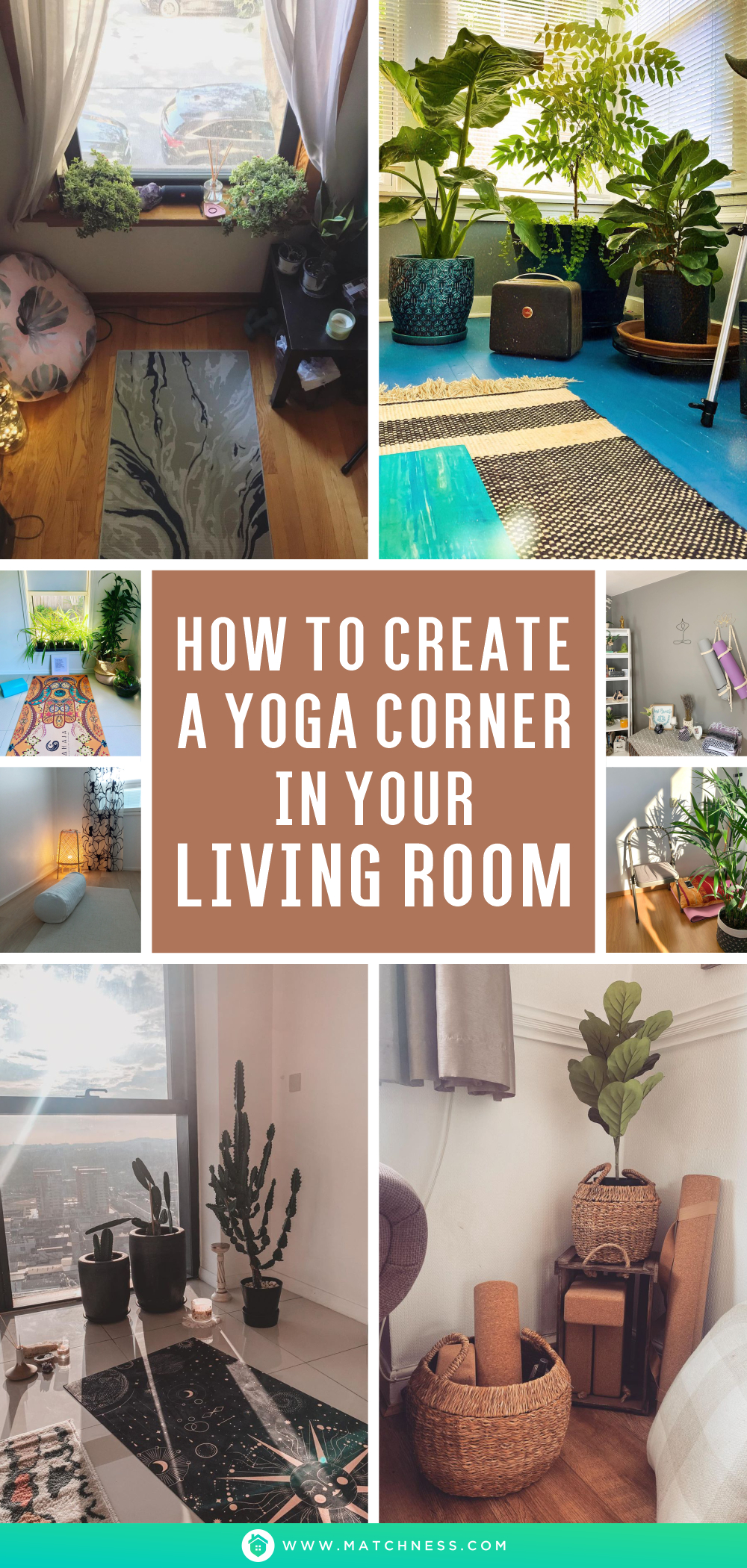
Natural Light
Choosing a room or corner that’s bathed in natural light can make a yoga or meditation session easier and more enjoyable. Studies have shown that natural light has a positive impact on mood, energy levels, relaxation and mental health. And if you want to create a yoga corner in your living room, you have to make sure that your living room gets enough natural light.
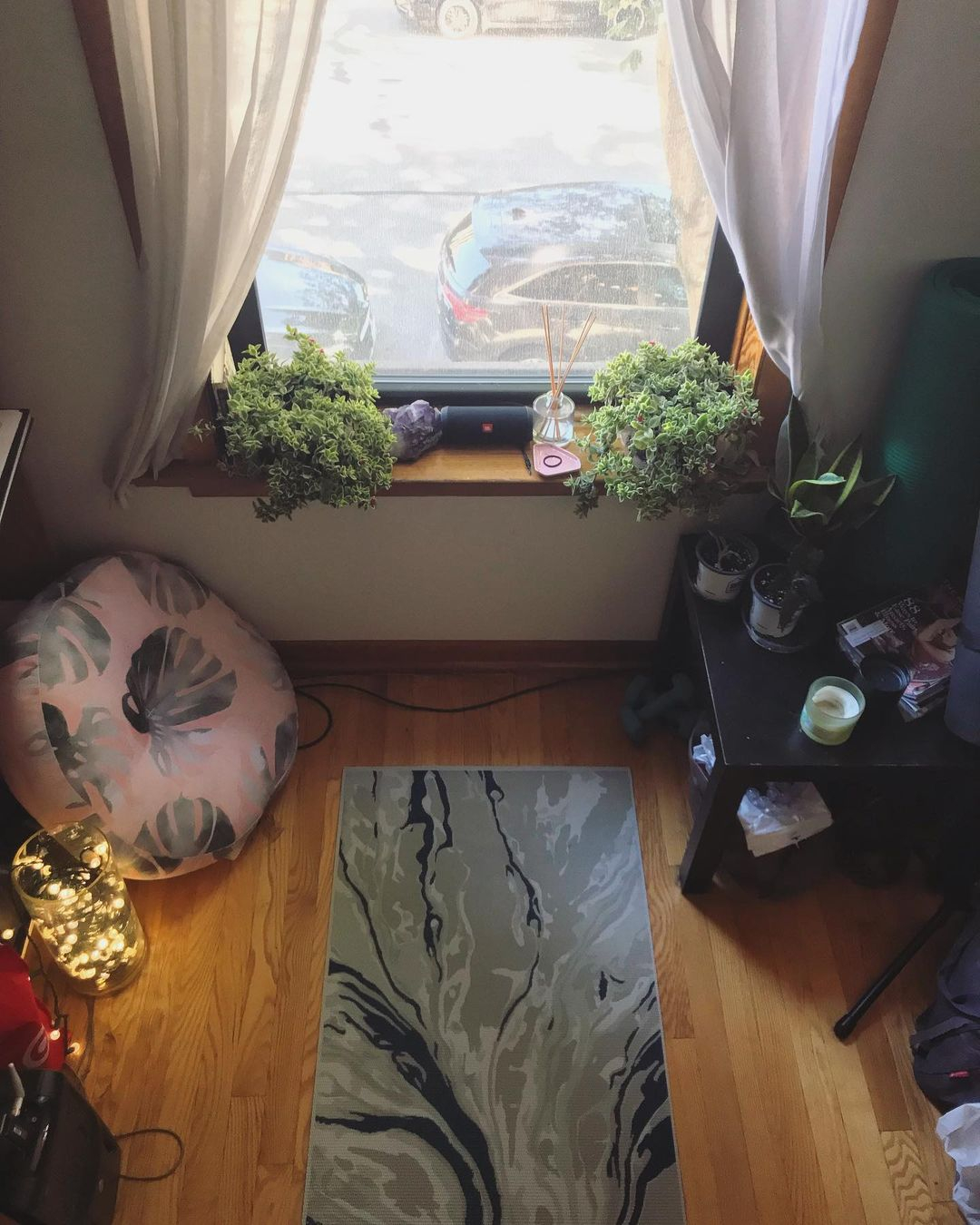
The small yoga area that is applied in the corner of this room will still look bright throughout the day in use because it is equipped with a transparent glass window that is wide enough and open. This glass window will let in sunlight according to your needs, if the sunlight is too much, then you can cover it with a cotton window that has been installed. Apply Near Glass Window from @perpster
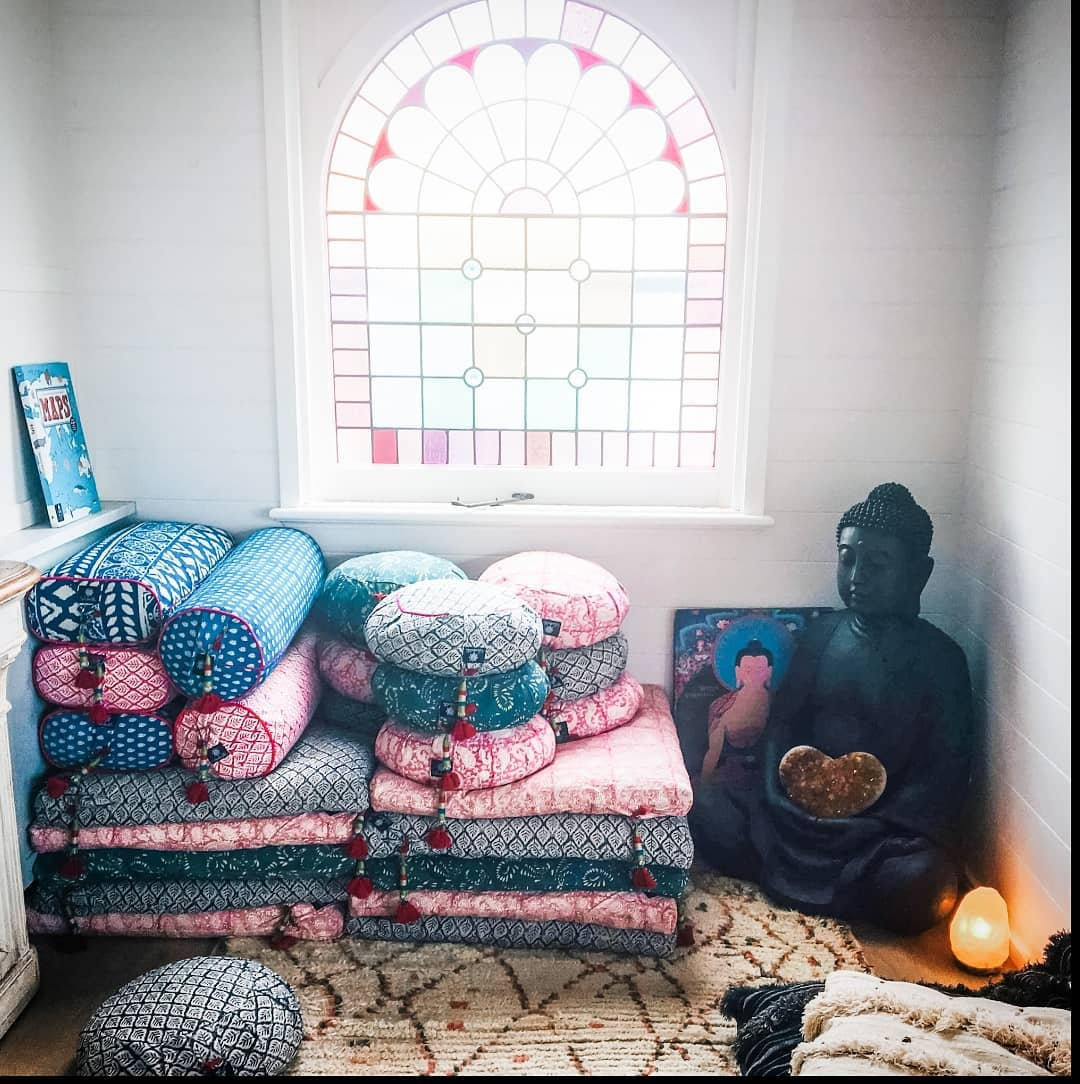
The corner of the room will be more useful when you turn it into a decoration for yoga. What you can do right now is use a yoga corner which is equipped with a glass window so that it can be used as lighting during the day. This window design with an arched and colorful shape is ready to be used as the focal point of the room. Arched Shaped Glass Window from @calmbuddhi
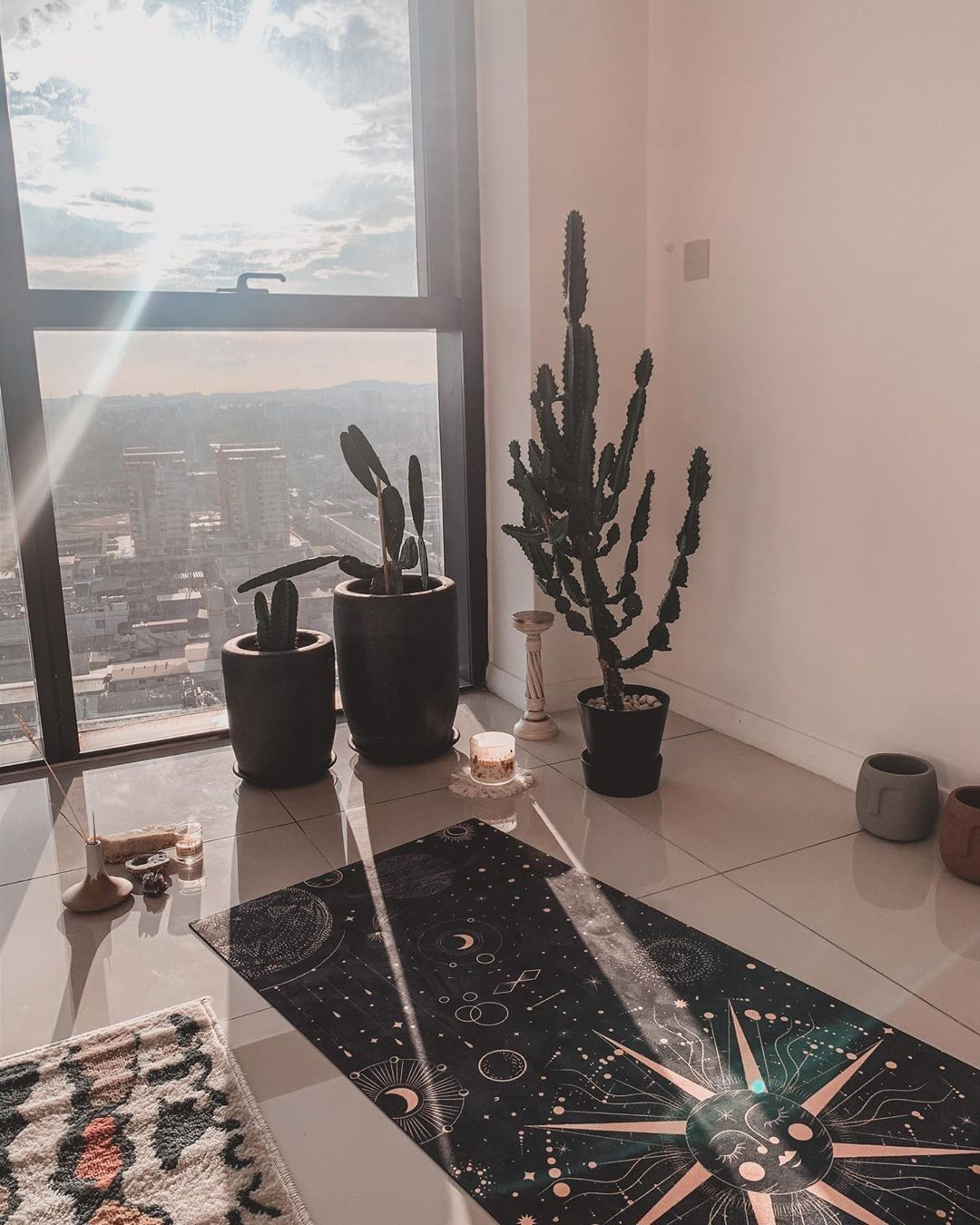
When you use a yoga corner, it’s a good idea to renovate a wall with a large, open glass window. The advantage that you can get is to enter sunlight freely and make the room brighter and less humid, of course. In addition, this glass wall can also be used as an area to enjoy outdoor views. Change a Wall with Glass Window from @karyaful
Space of the Living Room
Choosing a separate space to practice yoga is an important part of creating your own home yoga sanctuary. And if you want to make it in your living room, you have to make sure that you have enough space to create a yoga corner.
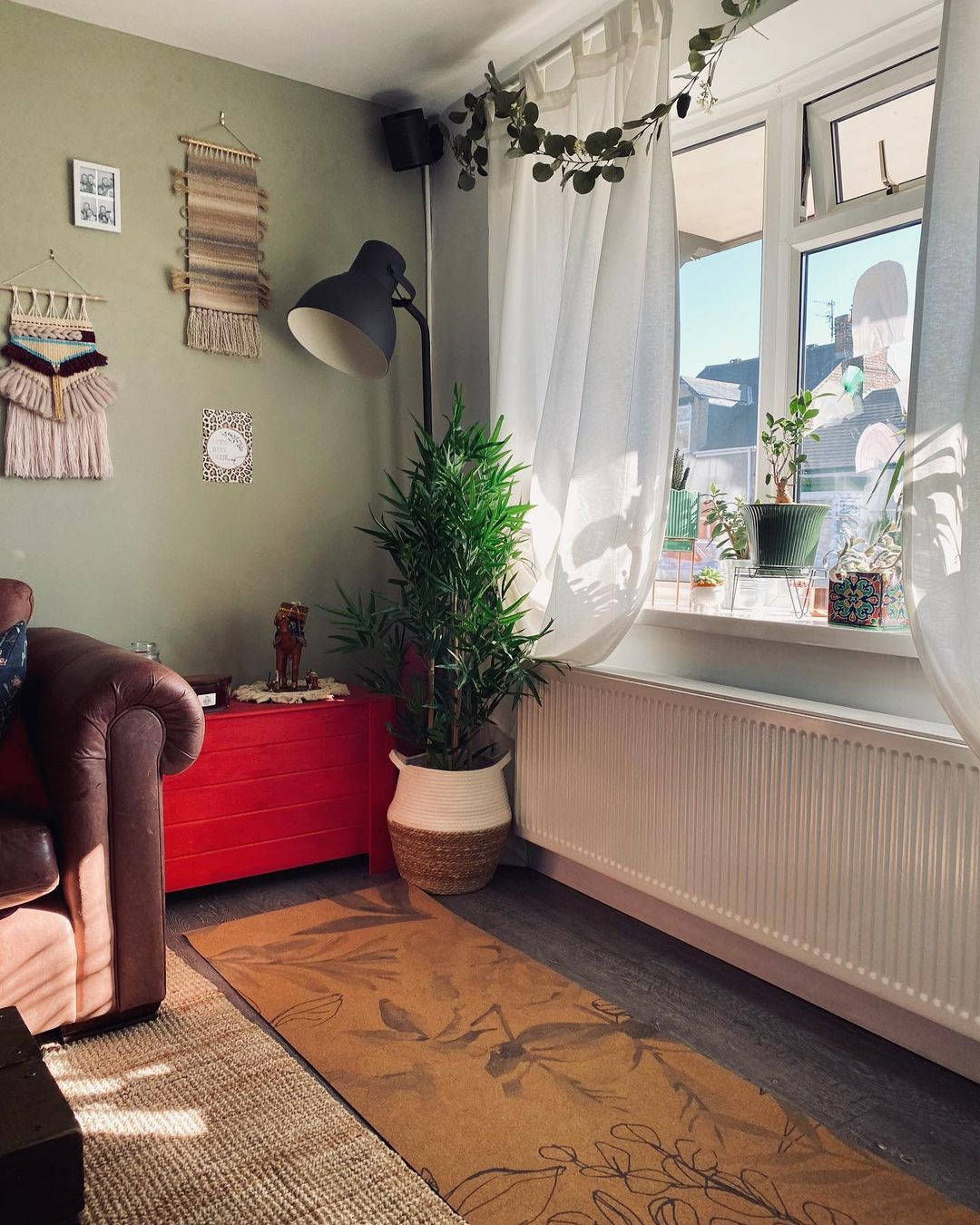
There is no problem with small corner decorations, the most important thing is that you can use them as yoga decorations that will benefit your body’s fitness. The entry of sunlight into the room makes this yoga atmosphere feel warmer and more inviting. Add a chair to use to rest from the yoga activities you have been doing after hours. Small Corner Yoga from @nayia.antoniou_
Layout of Your Living Room
When you want to create a yoga corner in your living room, you have to make sure that the place has privacy and serenity. It should also be away from distractions. There should be a clear boundary between your yoga room and living room.
After you pay attention to some of the considerations above, below are several ways to create a yoga corner in the living room. There are several important things to pay attention to when creating a yoga corner in the living room. It aims to create a yoga corner that is comfortable and can benefit your body. To find out more, let’s take a look at the ideas below.

When your living room has a corner that is not used, then it is used as a yoga corner decoration. That way, the decoration of this living room will be more multifunctional. Try to apply the yoga corner right next to the glass window to get maximum sunlight, besides that you can also see beautiful outdoor views. Yoga in the Living Room Ideas from @annekul
De-clutter the space
The first thing you should do is get rid of all items that will distract your concentration. This includes strong colors, big furniture pieces, and storage boxes. When creating a yoga space, it’s important to declutter and remove anything that doesn’t serve the purpose of your practice or that isn’t inspirational in any way. This will help you focus on your asanas and meditations without distraction.
Clear out all the clutter that can distract you and keep the area tidy. The leading principles of yoga are focus and concentration, so you shouldn’t have anything that can interfere with your practice. To create a truly functional and inspiring yoga corner, it’s essential to start with a clean and clear space. De-cluttering the room will remove any distractions and allow you to focus on your practice.
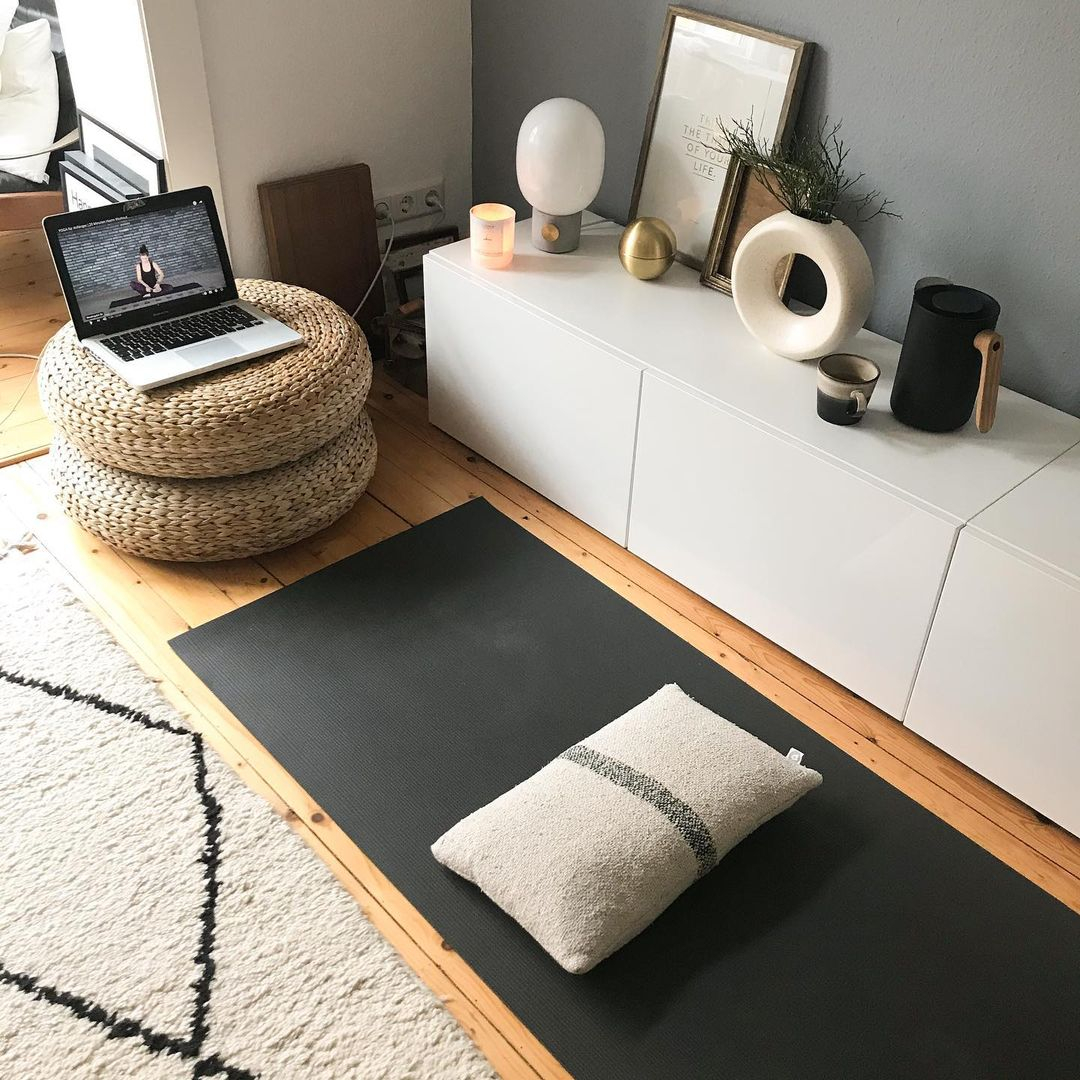
Designate a yoga area in each of your homes to ensure you stay fit. Prepare storage for this yoga area to store all the equipment and supplies needed, for example, you can use a closed storage cabinet with melamine wood which can give a touch of modern style because the surface looks shiny. Melamine Wood Cabinet Storage from @annekul

To minimize the chaos that occurs, you can decorate the yoga corner with additional vertical storage shelves that can be applied to the corners of the room. This shelf is open so it can also be used as an area to put some scent or small ornaments as a decoration that will never fail. The standing shelf is made of wood which has been repainted white so it looks elegant. Standing Rak Corner from @thebeetique
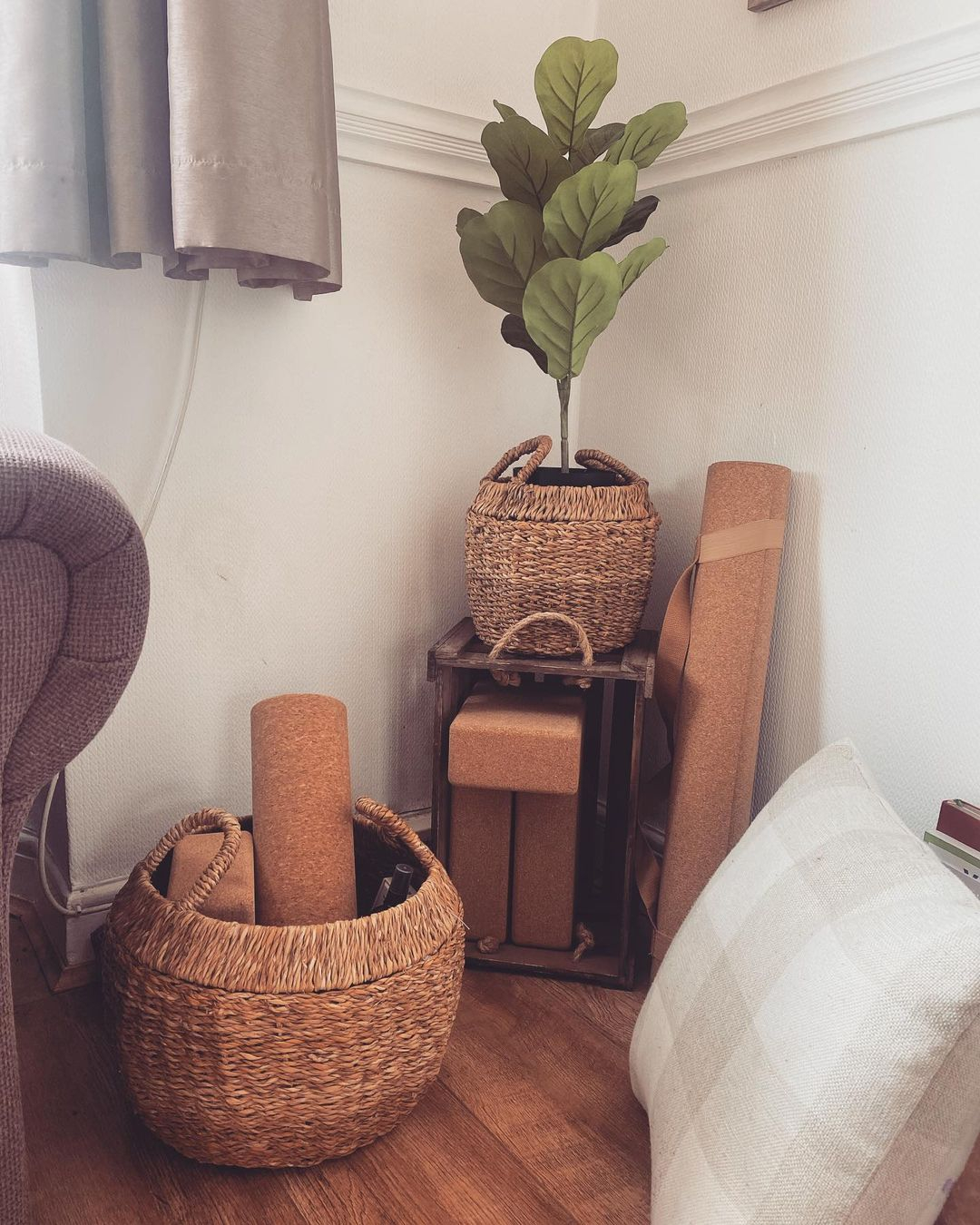
Don’t let your yoga equipment and supplies scatter everywhere which will make it look more chaotic and uncomfortable. A natural wicker basket can be placed in this room and can be used to store rolled up yoga mats. A storage basket equipped with handles on both sides makes it easy for you to move it anywhere easily. Anyaman Basket Storage from @mmb_yogafitness
Neutral Color Palette
Choose a neutral color palette that will help you to feel calm and relaxed. Earth tones like greens and browns or light cool colors like blues and lavender work best. Or, you can choose a color scheme that works with your existing interiors and avoid bright primary colors like red and yellow. These can be overstimulating and can even cause headaches! While the purpose of yoga is to get peace and relaxation.
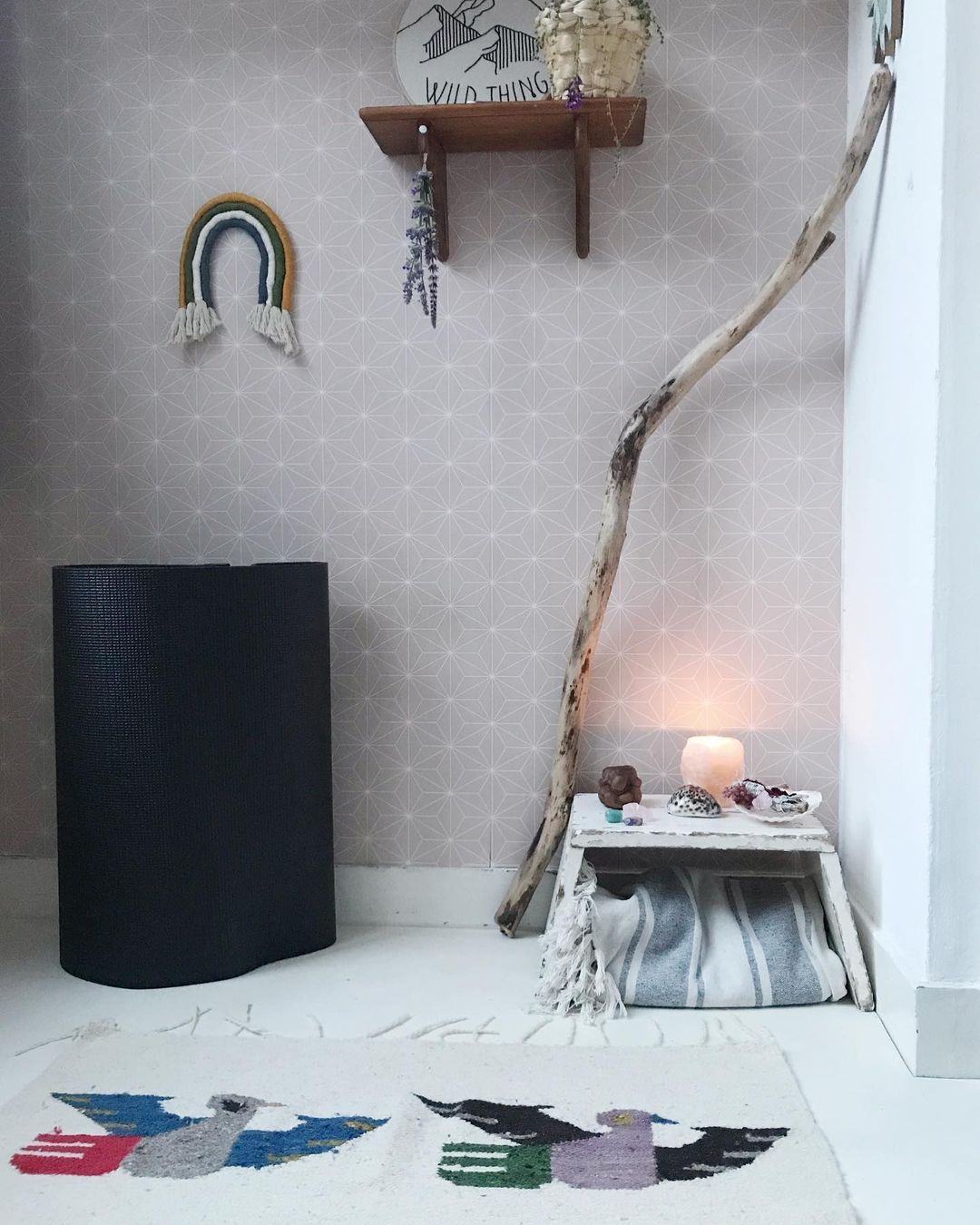
A small yoga corner should be dominated by splashes of neutral colors. What you can use right now is white which can be enhanced by using polka dot wallpaper with splashes of pastel colors. So that this room doesn’t look too plain, then incorporate some patterns into the striped mats and blankets that can be used whenever according to your yoga needs. Neutral Color Corner Yoga from @ilse.witjes
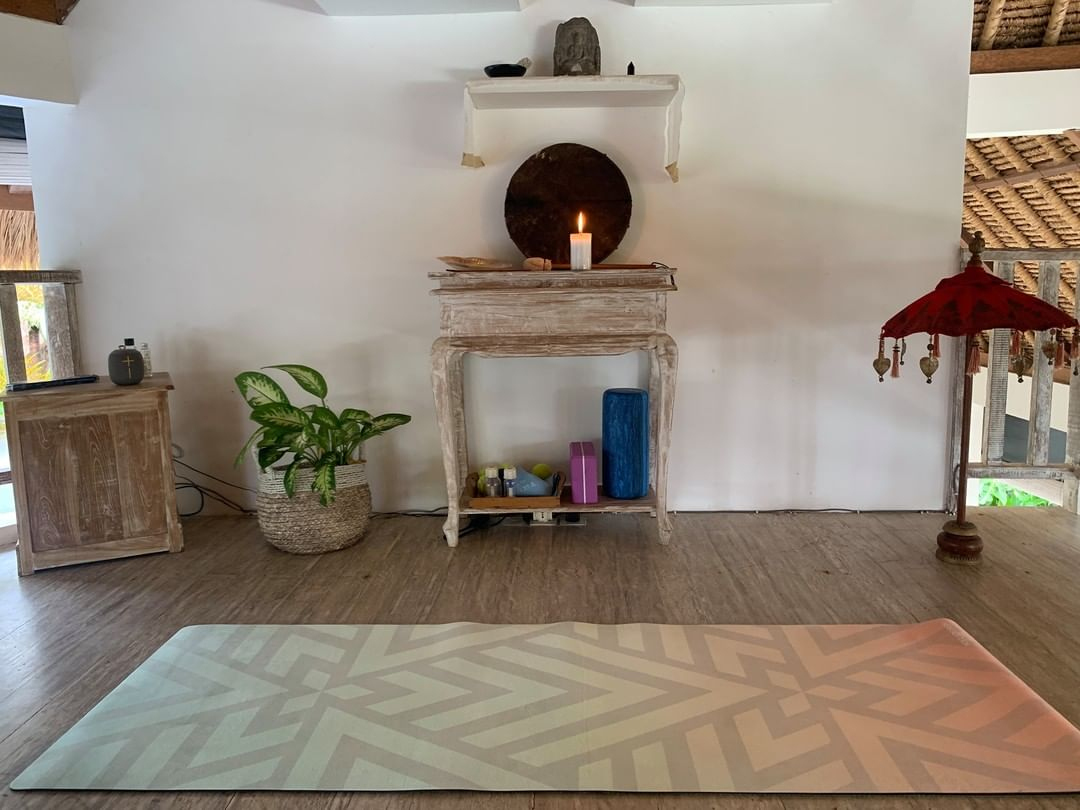
Touches of neutral colors that dominate this yoga corner area give it a farmhouse look that can never fail. Currently you can use a combination of beige, brown and white colors that can blend in the same room. In addition, the wood material used also makes this area feel warmer and more inviting. Farmhouse Color Corner Yoga from @somatic_trauma_healing
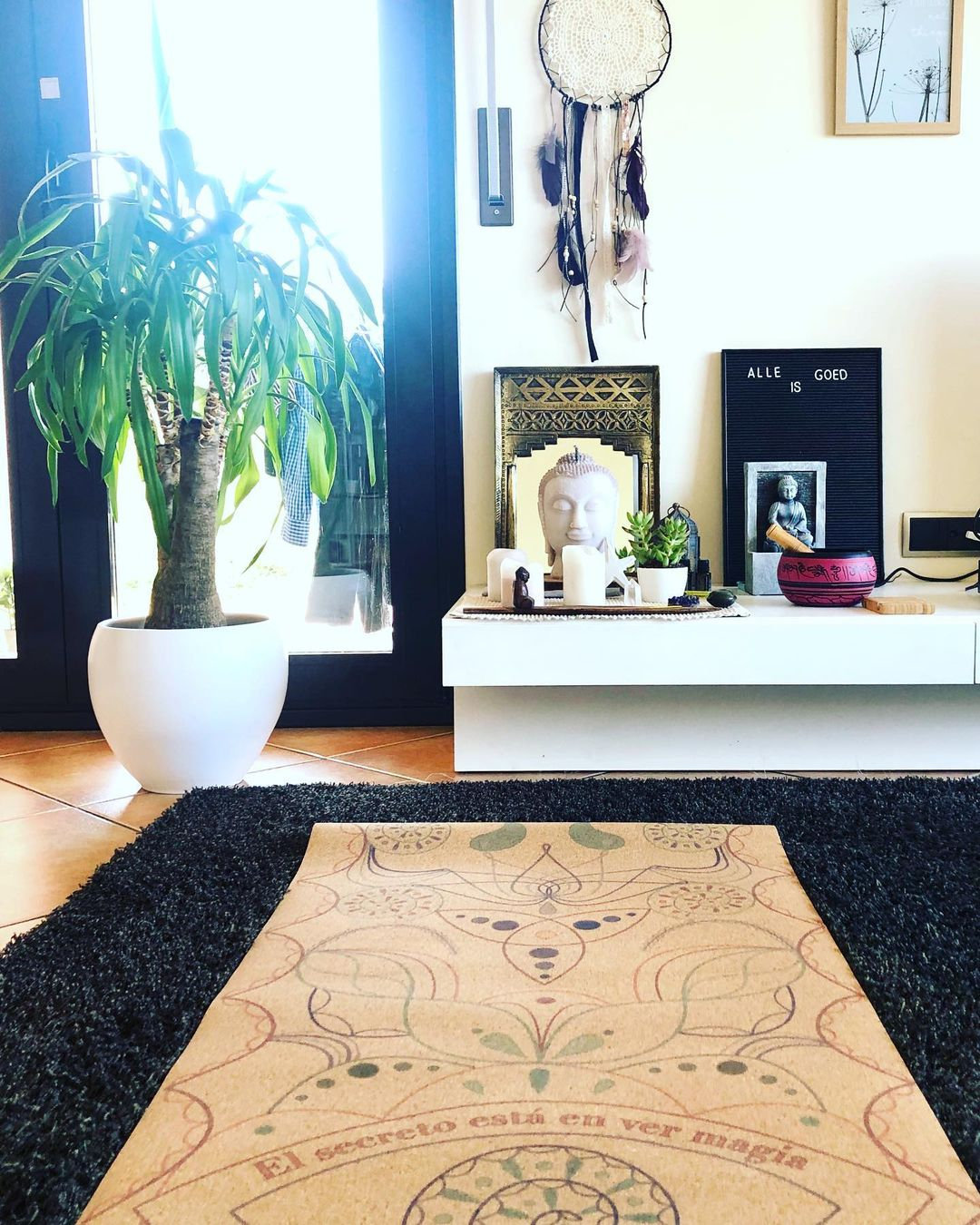
The black and white nuance that dominates this yoga corner is able to present a monochromatic theme instantly. Not only this color that you can use, but it’s a good idea to also add green plants around it to add natural color instantly. This indoor green plant can be placed adjacent to a glass window to get enough sunlight. Monochromatic Corner Yoga from @emmaromano.c
Props
Whether you’re just getting started with yoga or you’re a seasoned practitioner, props are an important part of any yoga practice. They make poses more accessible to those who may have less flexibility or have tight muscles. Props allow yogis to explore new poses without fear of injury. They also help to increase a yogi’s strength and flexibility.
When creating a yoga corner in your living room, you’ll need to consider what props you want to use and where to put them. Here are some common options:
- Bolsters and blankets (substitute a couch cushion) are great props for restorative yoga. They offer comfortable support when seated and soften your posture.
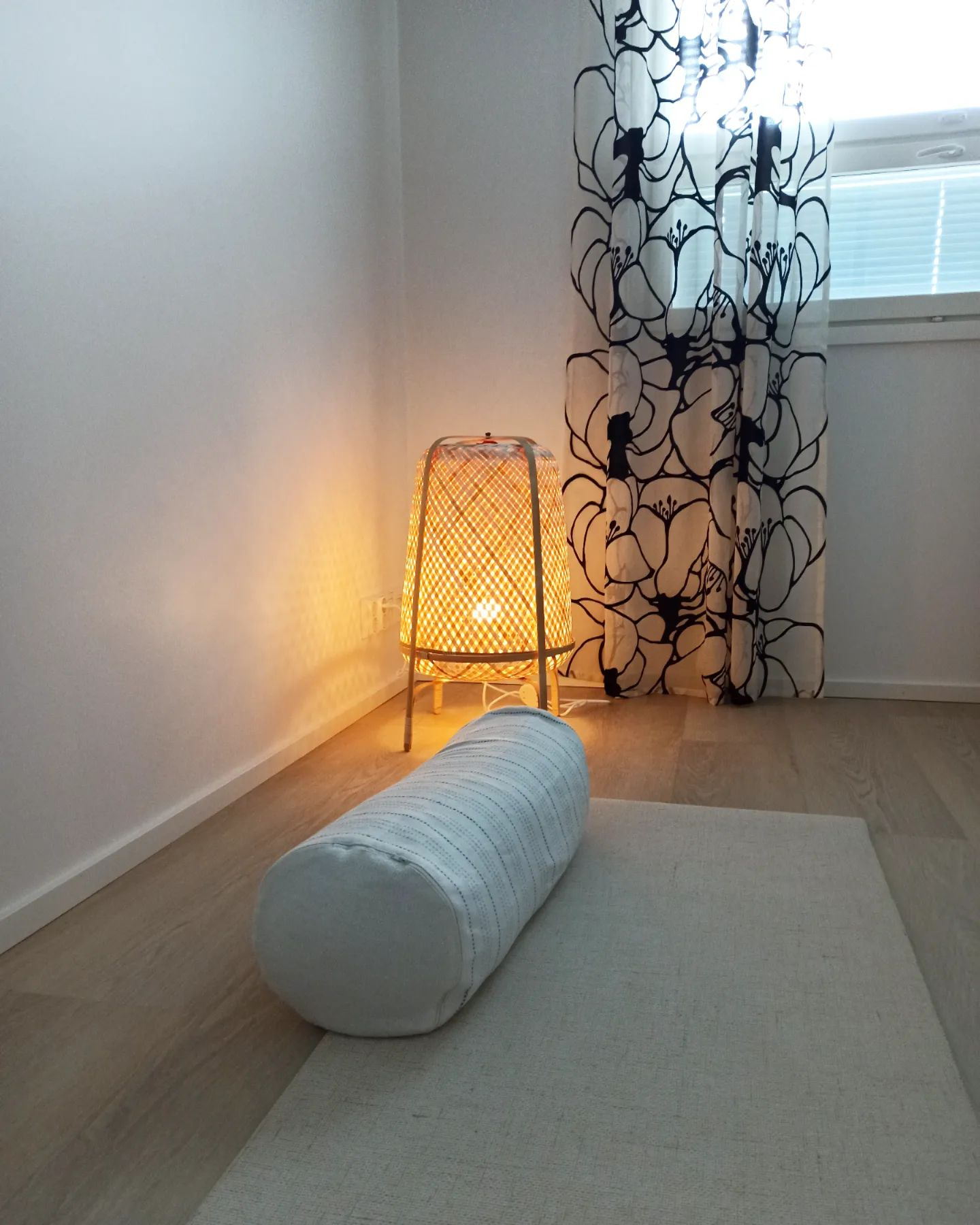
Choose and use a mat with bolsters of the same color choice so that it blends perfectly into a yoga corner decoration. Light gray is the best color choice that looks neutral enough to use. Both are tools to support your yoga activities more optimally. Place a candle in the corner of the room for very inviting warm lighting. Neutral Yoga Mat with Bolsters from @estetiikkaabym
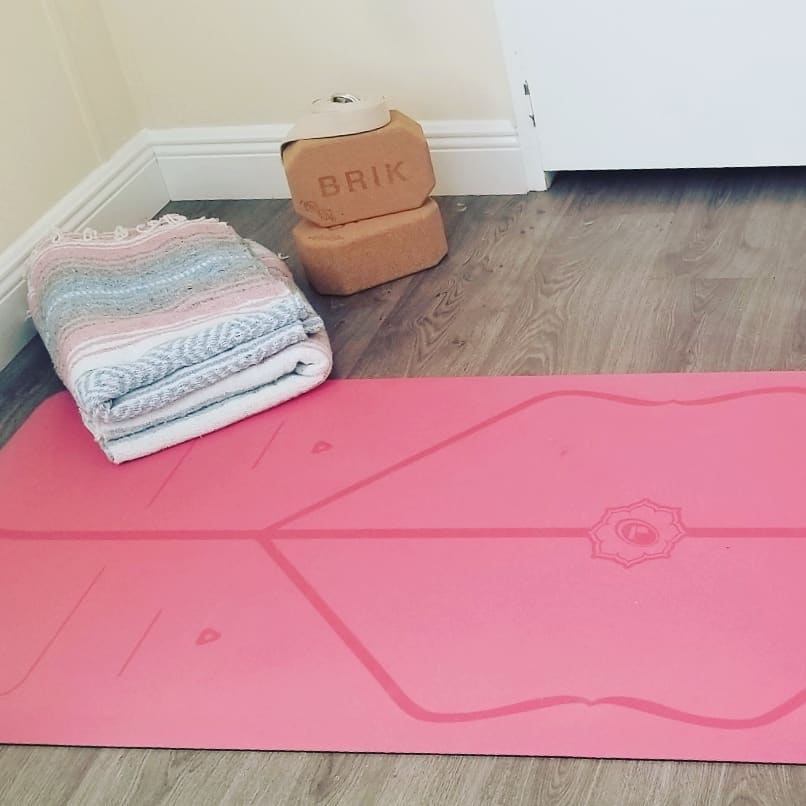
It’s a good idea to add a blanket in your yoga area so you can use it when needed. When not in use, you can just fold it so it doesn’t give a messy look which makes this yoga area uncomfortable. Choose a blanket with soft and smooth fibers. Throw Blanket from @gal.haber
- Long straps are also useful in achieving certain poses such as reclined butterfly. They can also be used to assist with a seated forward fold.
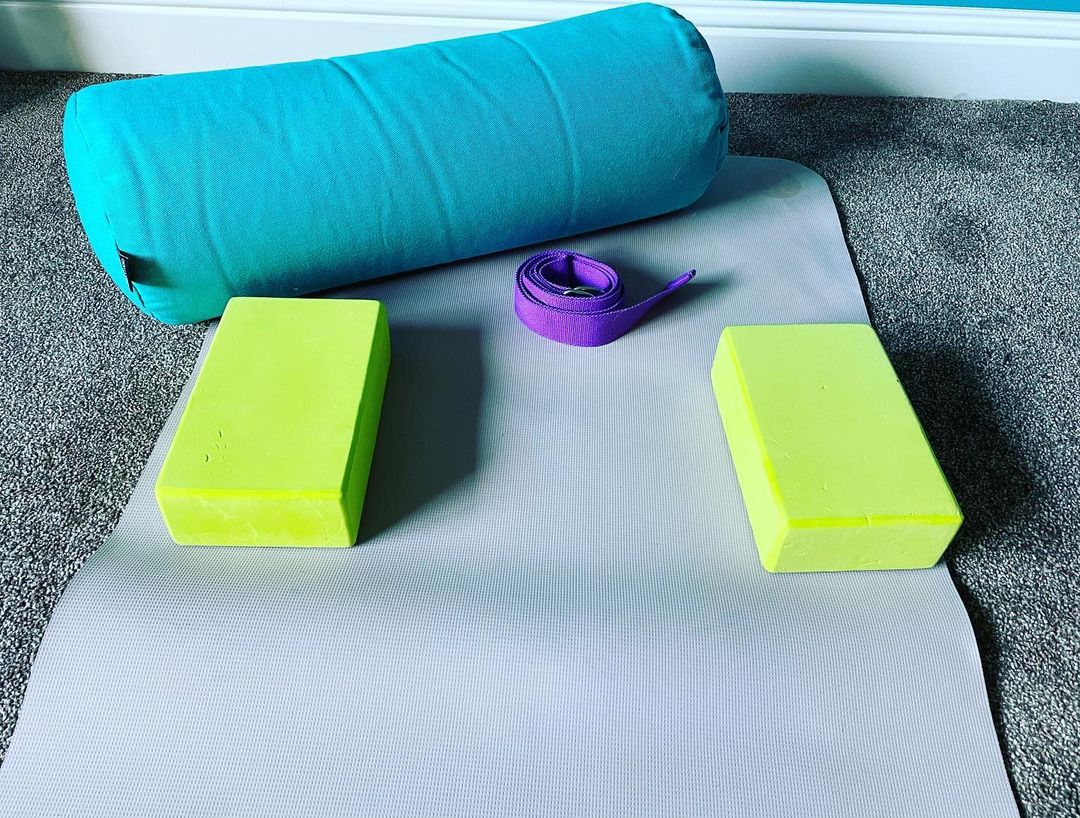
Other yoga support tools that you can have are long straps that can be placed on the yoga mat along with bolsters and blocks that can be repainted in striking colors so that they can be used as the focal point of the room. Maximum muscle stretching can use these long straps and do yoga activities regularly for your maximum body fitness. Long Straps Ideas from @susans_soulful_space
- Blocks. In many yoga poses, a block can make it easier to achieve ideal alignment and deepen the posture. For instance, it’s often helpful to place a block between the knees when doing backbends (like Crow Pose or Pigeon Pose) to prevent the legs from splaying out. In addition, a block can be a helpful tool to prepare for some postures that require strong neck flexion. For example, the edge of a block can be used to apply targeted pressure to the splenius capitis and semispinalis capitis muscles at the back of the neck.

Block is one of the most important yoga tools to have. Now you can have it with a choice of wood which has a fairly smooth surface so it is comfortable to use for relaxing the neck or knees. Usually this blcok must have a pair or two of the same size, material and color. Also hang some painting frames to fill the empty walls so they don’t look too plain. Double Wood Block from @yoginiinjeans
- Sandbags. Sandbags are a great way to add some weight and support to your yoga practice. They can be used in restorative poses and seated yoga postures to deepen and extend the stretch.
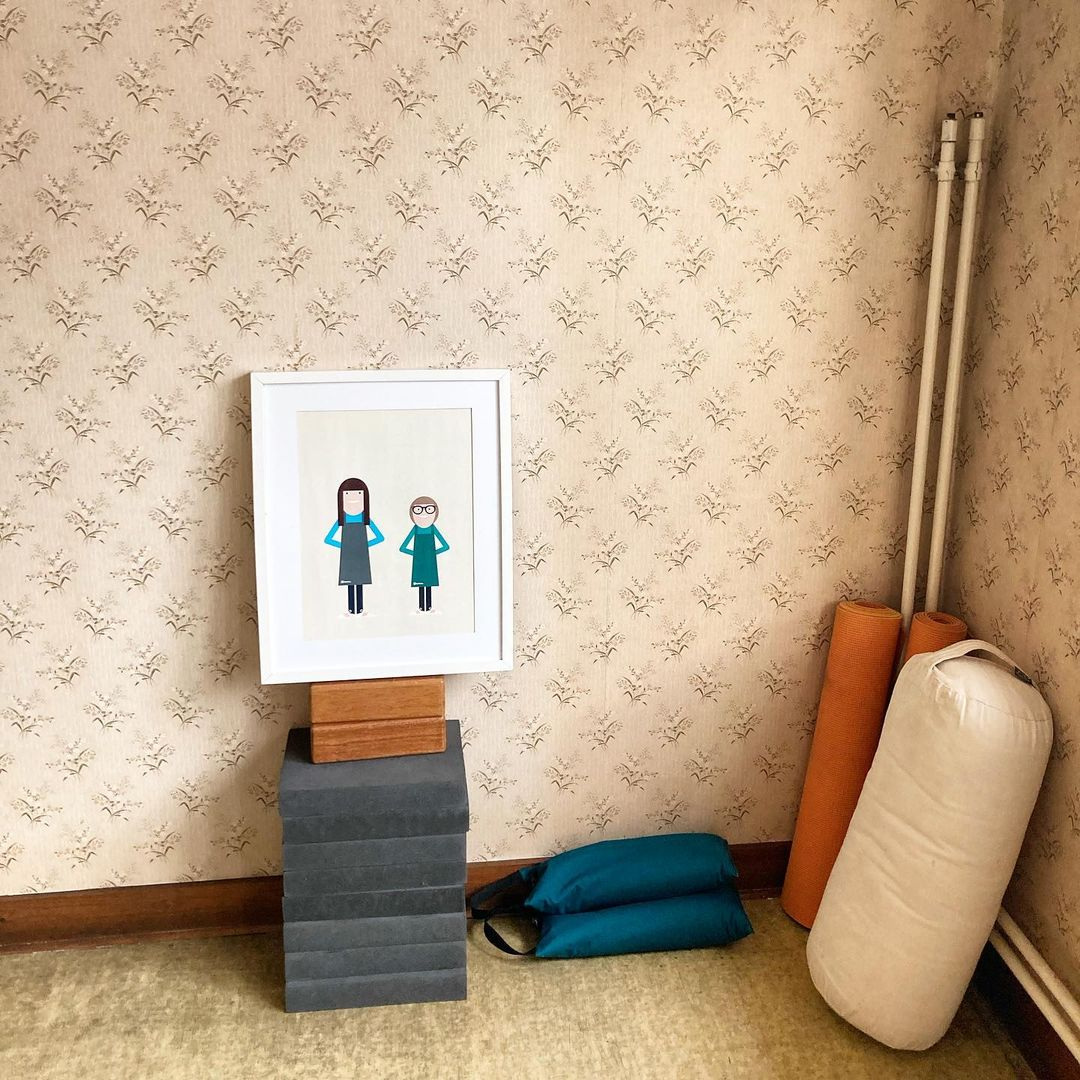
To add to your yoga load more effectively, you can use sandbags with a cloth lining that can be washed again when they look dirty. You can have it and get it online with quite affordable price options. Usually these sandbags are provided in two and can be used as needed. Sandbags Ideas from @bubbleandsprout
- Pillow. A yoga pillow is a great way to increase your comfort during a class. It allows you to relax your back, shoulders and chest as you lie down in different positions.It also offers a comfortable place to rest your head during poses such as Baddha Konasana or Butterfly pose. It can be used in a variety of yoga classes, from dynamic flows to restorative poses and even in meditation sessions.
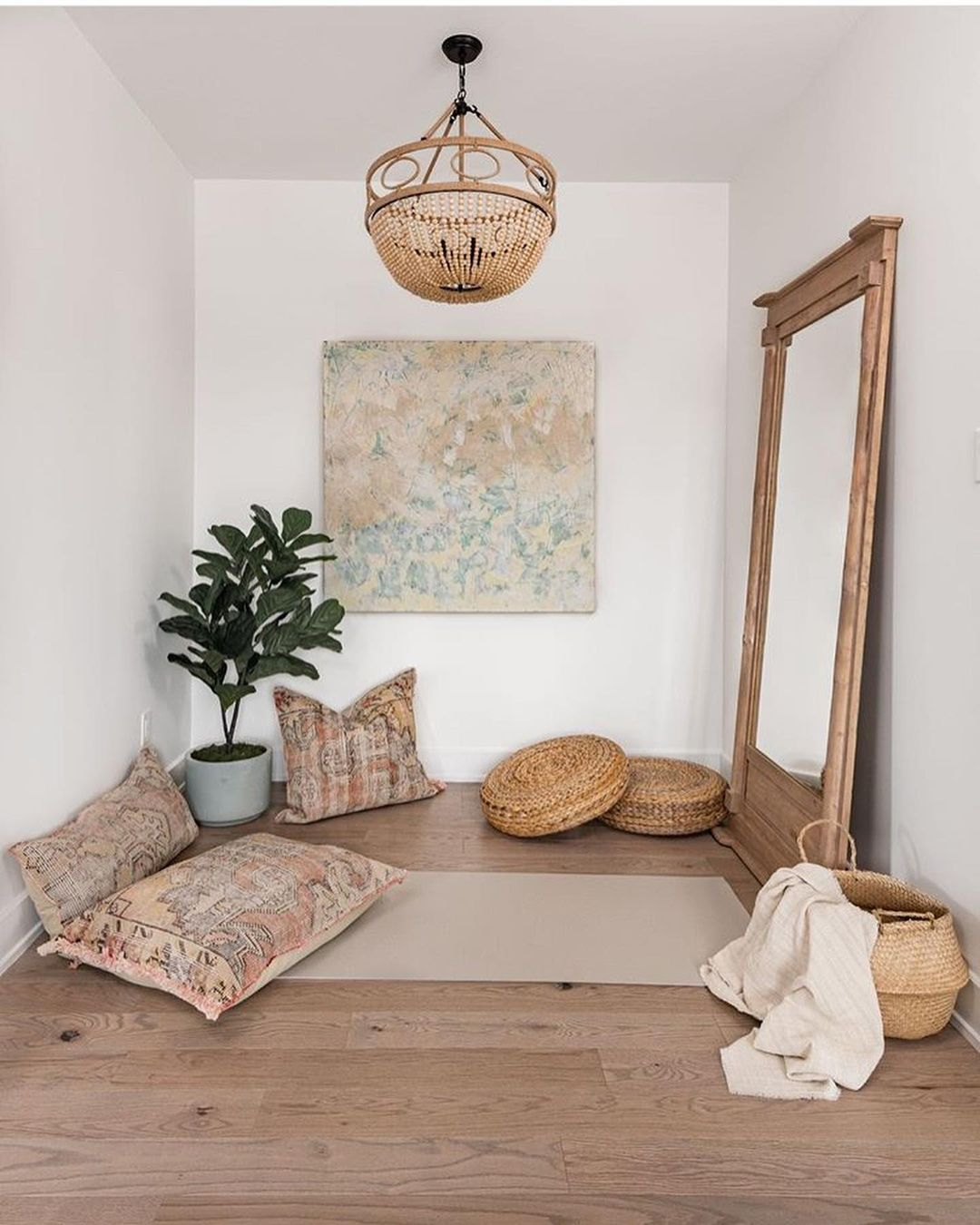
The comfort of the yoga mat will be maximized when you add a few throw pillows as a surface that you can use and can find easily too. Match the color and pattern of the throw pillows to the mood or color tone of the room so they don’t look too contrasting. When this yoga corner is dominated by a vintage theme, you can use a touch of beige and brown. Throw Floor Pillows from @yogajournalgermany
- Yoga Mat. The best mats for yoga offer excellent grip and support for your feet and hands so you can perform your poses safely and comfortably. The right mat will help you maintain good posture, and it should also be comfortable for the entire length of your practice. When buying a mat, you should consider the material it’s made from, thickness, and durability.

For maximum yoga comfort, you can cover the floor with a mat that has a bohemian pattern with bold splashes of color. The existence of this mat is perfected by the presence of greenery so that it looks contrasting and beautiful. In addition, the mat used also has a fairly thick surface so that it is softer and more comfortable to use throughout the day. Bohemian Mat Pattern from @your_yoga_nook
- Chairs. Yoga chairs are a classic prop and are great for helping you deepen many different poses. A chair is a great way to help you get into poses that are difficult to do at home, such as backbends and forward bends. It can also be used as a seat for resting in meditation poses. The most important thing to remember when purchasing a chair for your yoga practice is to make sure it is sturdy, stable and safe to use.
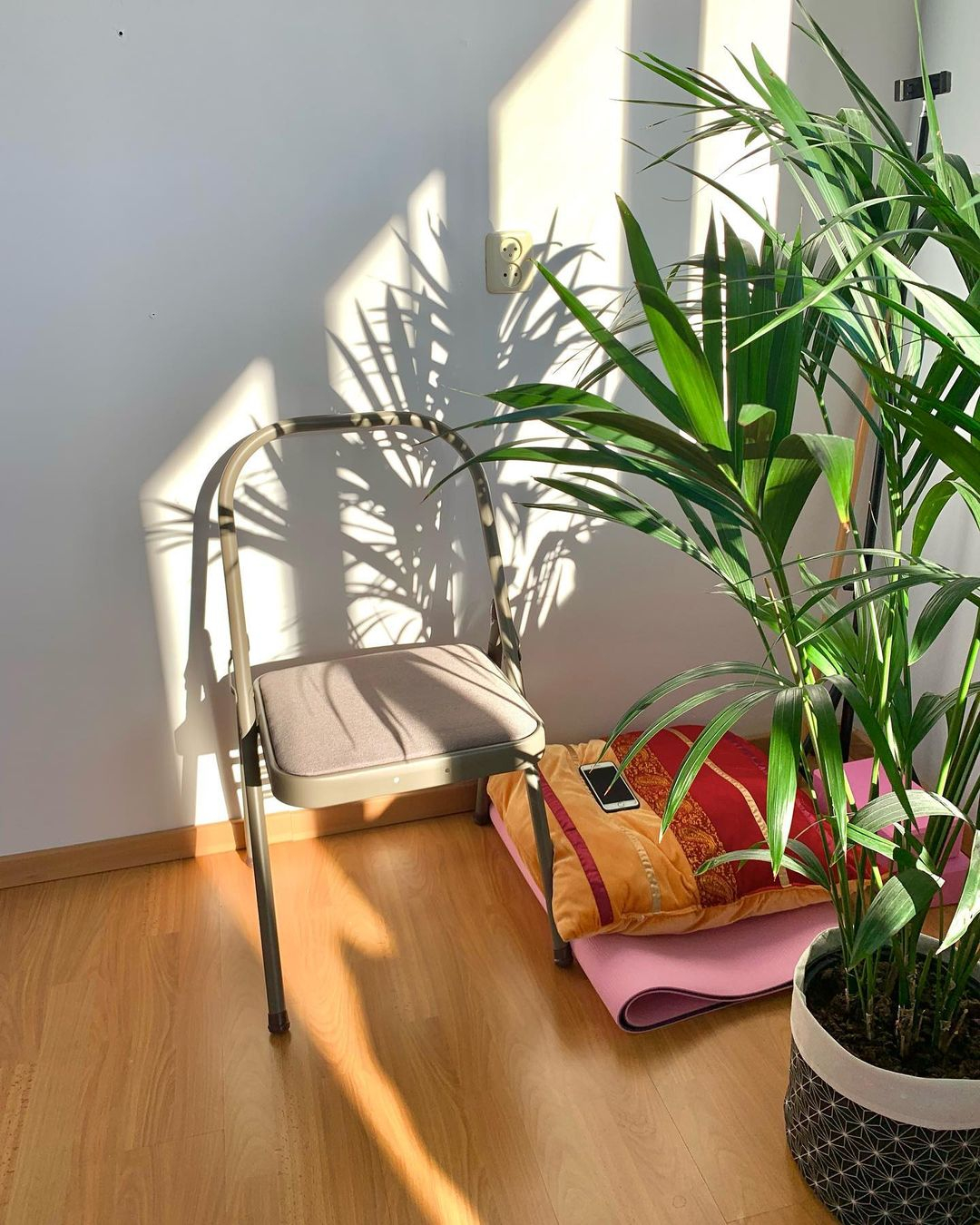
To help maximize your yoga activities, you can add a yoga chair with a choice of sturdy iron to support your back firmly. This chair can be placed in the yoga corner area and can be folded when not in use to save more overall floor area. Get a yoga chair at the nearest store with an adjustable budget. Yoga Chair from @christalliu7256
Decoration
The decor of a yoga space is a key component of its success. It is the smallest detail that can make all the difference between a stale and stagnant environment and an inspiring and stimulating one. A few natural objects, such as potted plants, a floor lamp with paper shades, artwork or photographs are all excellent choices. They will help you relax and fully benefit from your yoga practice. Consider hanging a few simple prints or tapestries on the walls to add some interest to your yoga space. A quote like “Inhale, Exhale” or a lotus print would be a great choice.

Cover the yoga floor with a cloth tapestry in the color of your choice that can make the room feel more pleasant and colorful. This tapestry mat design comes with a bold color that is ready to be used as the focal point of the room. Namaste sign can be applied to the wall that is still empty, you can choose and use it with a size that is large enough. Colorful Tapestry Mat from @forey17
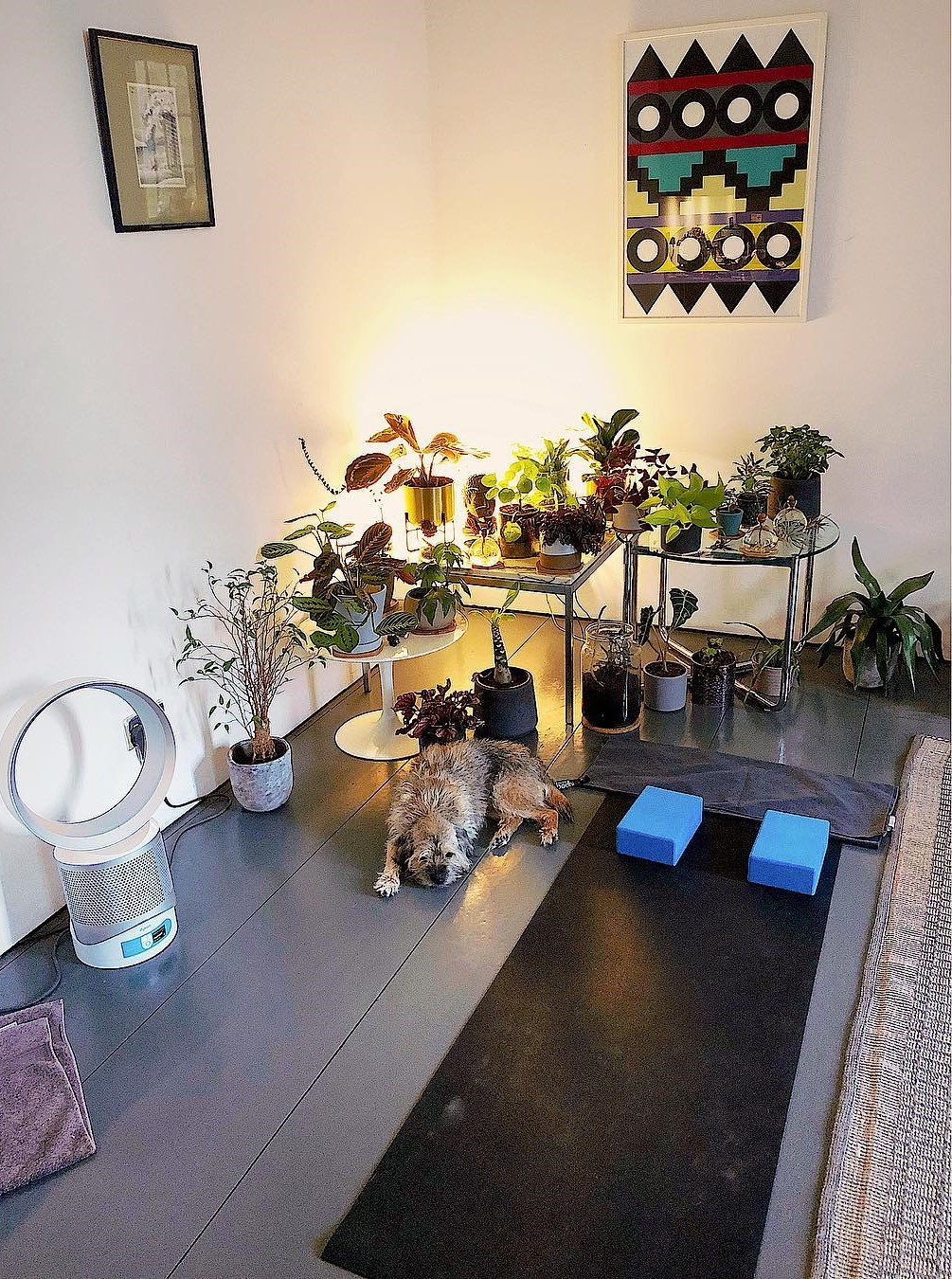
Don’t let the walls in the yoga corner look plain and boring. Currently you can use several painting frames with different themes and color choices so that they can be used as the focal point of the room. Use painting frames with two different themes, one of which is a bohemian theme with a touch of bold color. Wall Decoration Ideas from @mor.d.ros
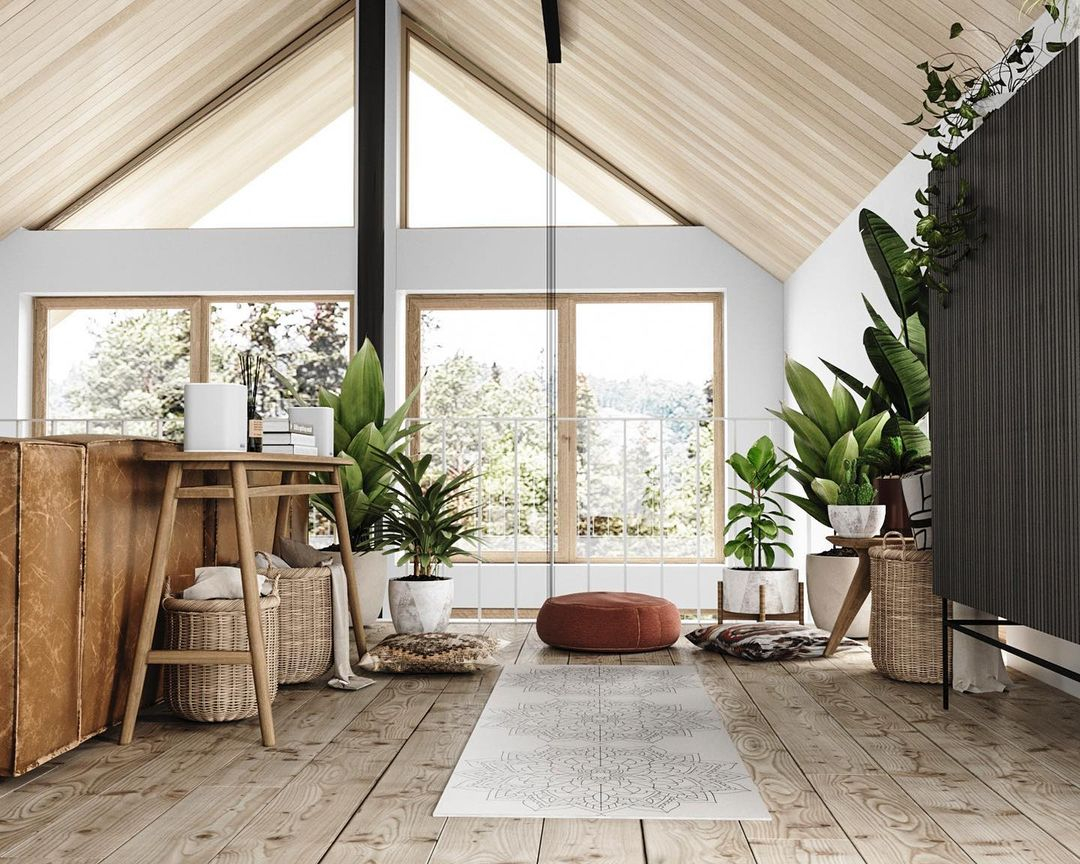
The green plants that are placed around the yoga room are natural decorations that can make your activities feel more relaxed with beautiful views. Use a variety of green plants that are large enough to make a room statement. Use a pot according to the size of the plant you are using, and take a stab at it. Indoor Plants Decoration from @designbyplural
Add Calming Sounds and Scents
A yoga corner is an excellent addition to any living room. It can serve as a calming space to practice meditation and relax in after a long day. And to make your yoga corner more perfect, adding calming sounds is a great way to set the mood for your practice. Music can help set the mood for your zen yoga sessions. Try to find a mix of calming sounds like nature sounds, instrumental music, or Tibetan bowls and chimes to enhance the experience. Don’t forget to add scents to your yoga corner. Candles and aromatherapy oils are popular options, but you can also try diffusers to maximize your experience.
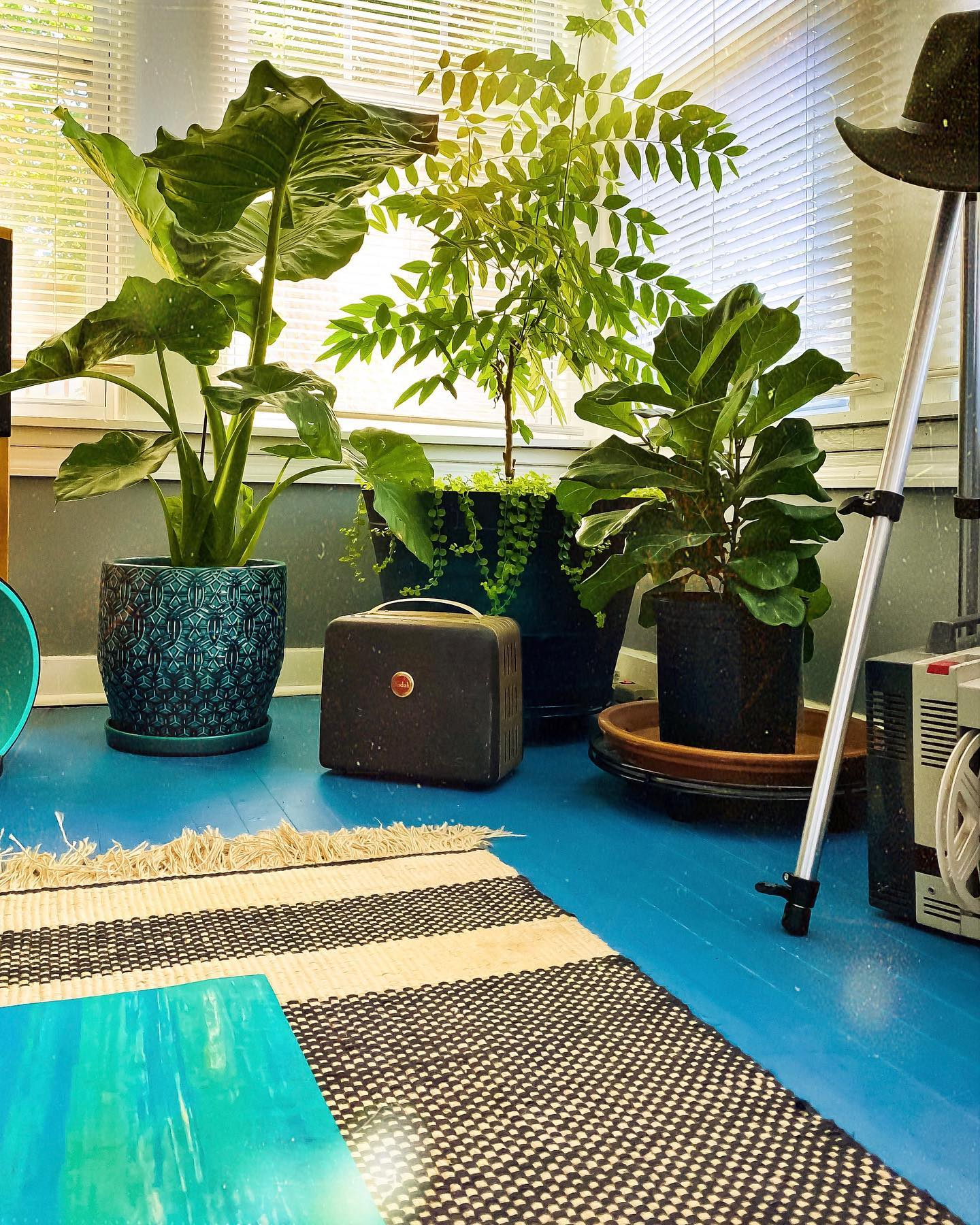
Sound makes your yoga activity more relaxed. You can choose music according to your yoga wishes and needs. Just put this portable sound right in front of the mat used, it’s not enough to get here, you can also choose it wirelessly so it’s more practical and not too complicated. Portable Sound Without Cables from @____tree
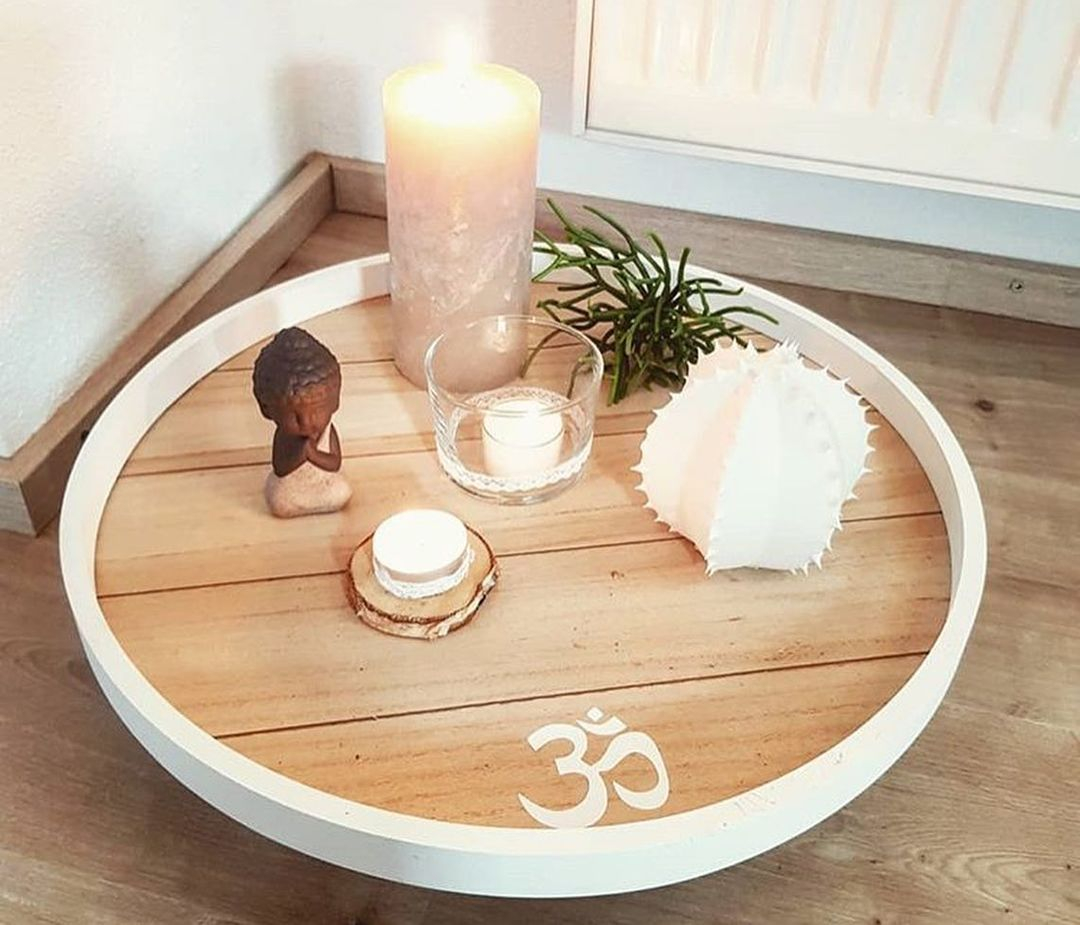
To make you more relaxed during yoga, you can add aromatherapy candles with the same scent so they don’t mix and make you feel more disturbed. Just put this aromatherapy candle on a wooden tray that can be placed in the corner of the room so it doesn’t interfere with your activities. You can move it easily. Aromatherapy Candle Tray Display from @yogajournalgermany
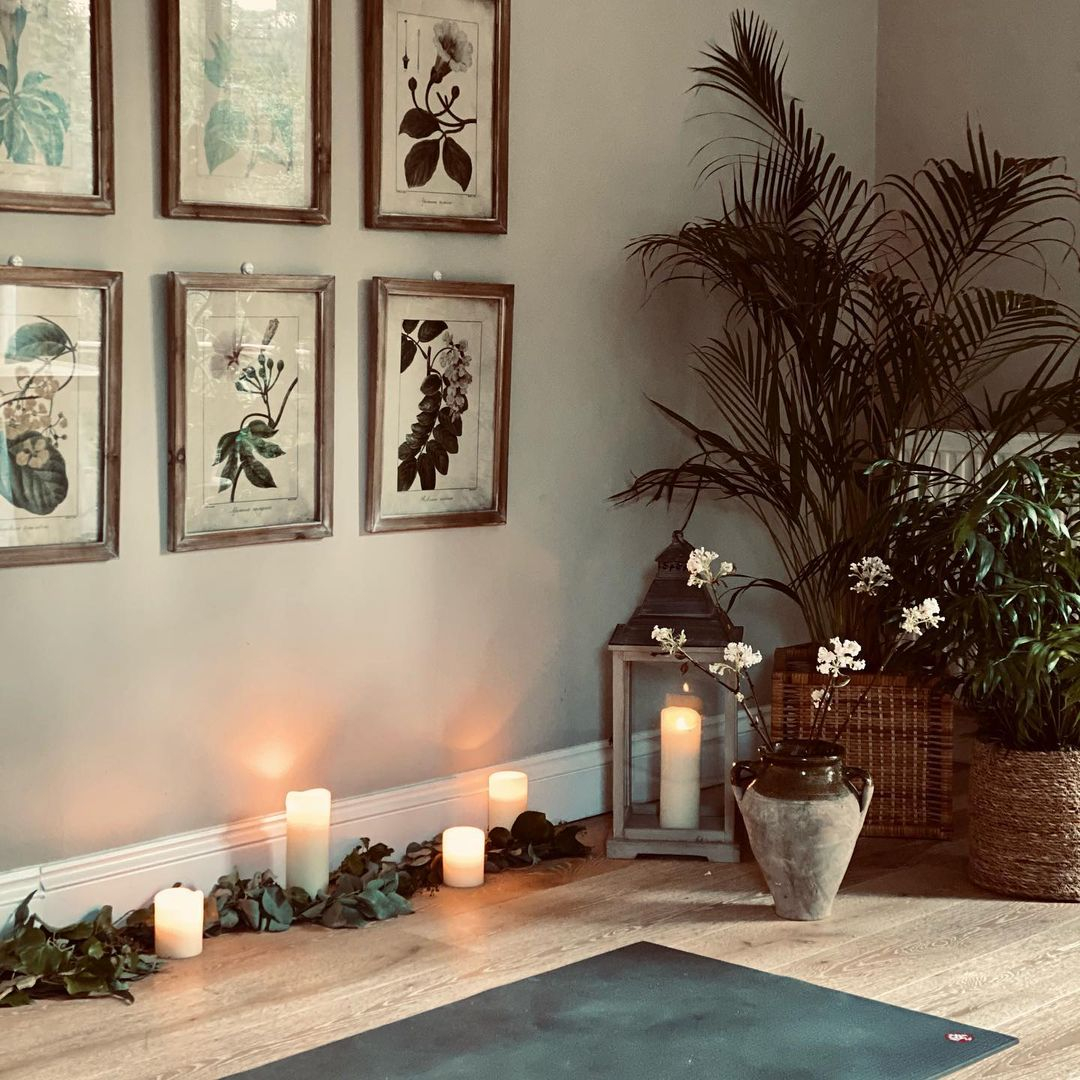
Aromatherapy candles that are placed along the yoga mat used are accents to relax you more deeply. Besides making you more relaxed, the presence of this candle can also be used as an additional, very inviting, dramatic lighting. Green plants are additional decorations that you can enter into the room. Relaxing Scent Aromatherapy from @ginkgo.living
Provide Proper Storage
To make your yoga corner in living room neatly arranged, provide proper storage. Choose the furniture that is plenty of storage space to hold your yoga mats, accessories and other items you may need for your sessions. In choosing the storage, it should be adjusted to your yoga coner and living room spaces. Don’t let your storage space become cramped and uncomfortable for your yoga session.
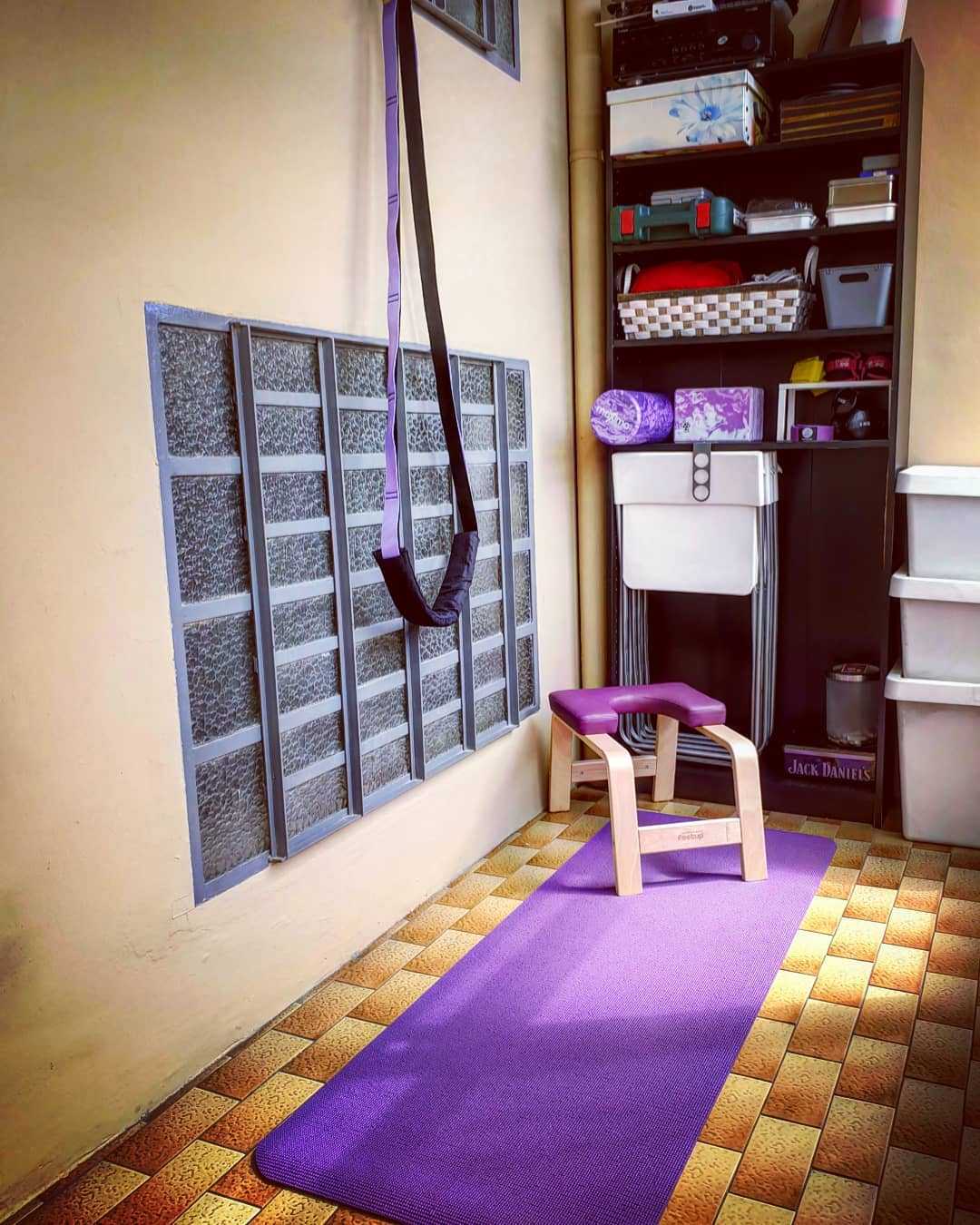
Take advantage of the empty wall space as a built-in storage area that you can never fail to try. You can use it to place all your yoga equipment and supplies in a neat and orderly manner. This vertical storage rack is suitable for decorating limited-sized yoga corners. Built-in Open Shelf from @biokia80
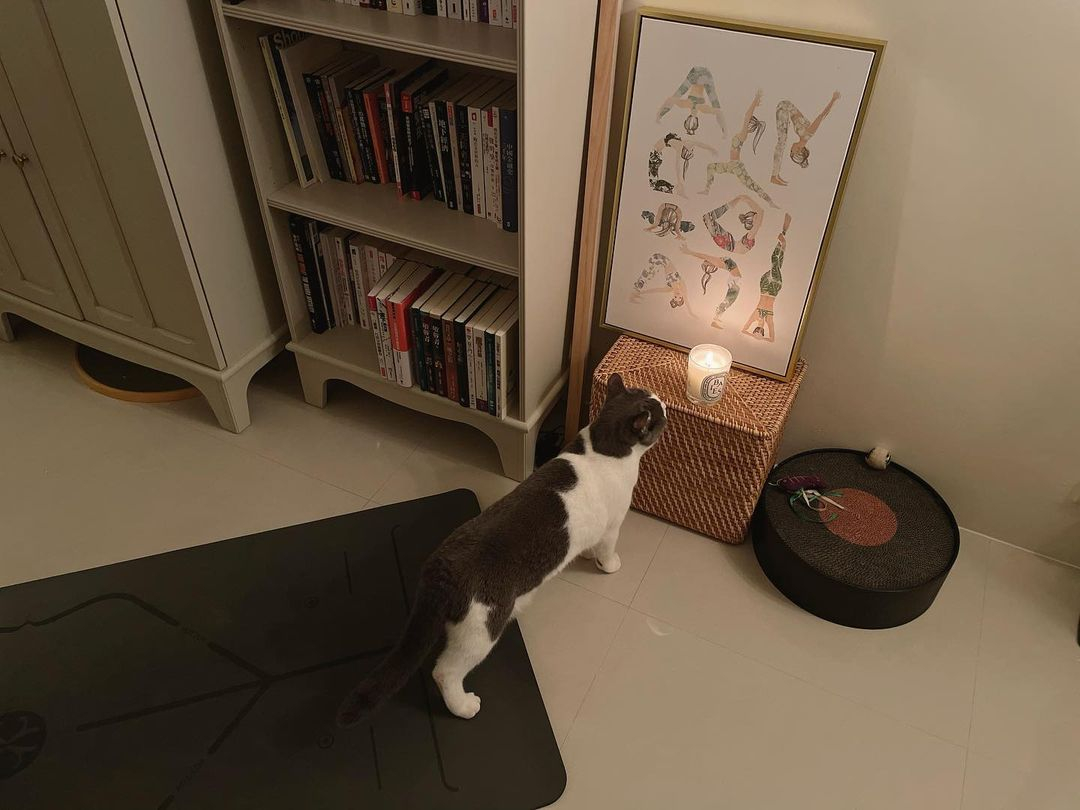
There’s nothing wrong with adding bookshelves to your yoga corner decoration. Its existence can be used as the focal point of the room. After doing yoga activities, you can continue reading your favorite book. Wicker baskets are a storage addition that you can use all together. Bookshelves Ideas from @cathydudu.life
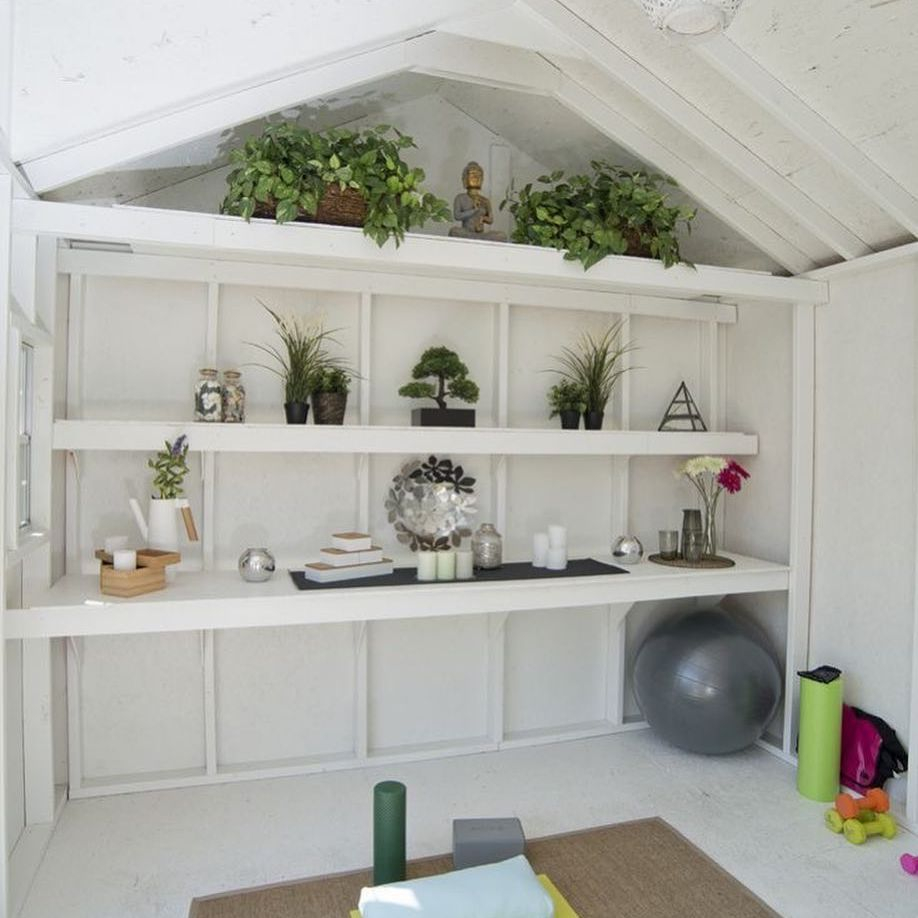
You can use the white wall mounted storage that is applied in the yoga corner decoration in its entirety. You can use this open storage to place some of the ornaments and decorations that you have, place small green plants in this shelf area for a contrasting look and instantly bring a natural atmosphere into the room. Wall Mounted Shelves from @remaxdowntown


